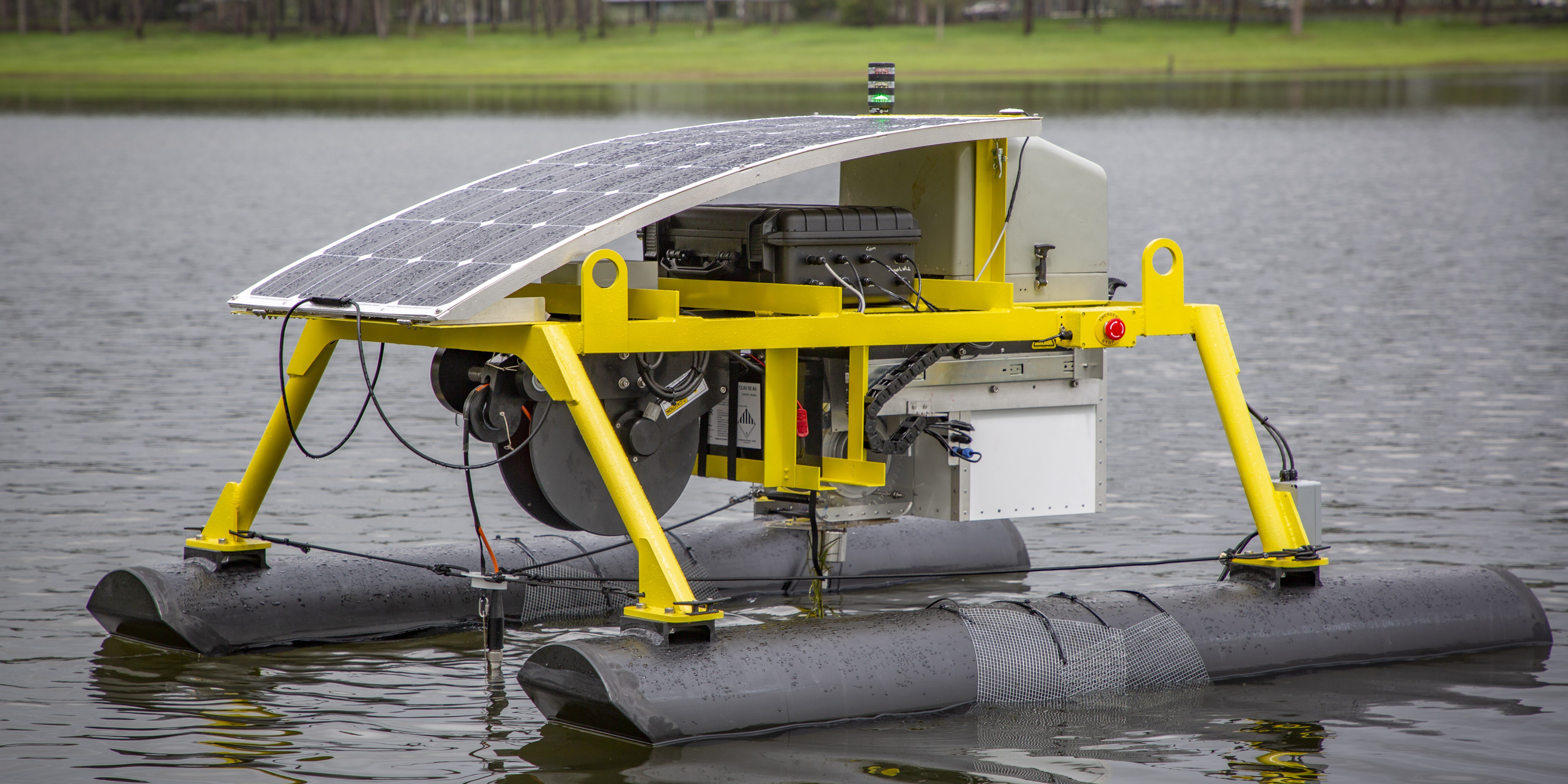Artificial intelligence and robotics to revolutionise water quality monitoring

SAMMI, Seqwater's Autonomous Motorised Monitoring Instrument
Self-driving, solar-powered robots are improving the safety and efficiency of water quality monitoring across South East Queensland, with further developments underway to make the machines capable of controlling pest weeds as well.
South East Queensland bulk water supplier Seqwater has partnered with the Queensland University of Technology (QUT) to create a 1.7m robot, capable of operating autonomously in waterways, collecting water samples and measuring water quality parameters, as well as creating sonar maps of each reservoir.
Seqwater’s Autonomous Motorised Monitoring Instrument – or SAMMI for short – set sail in 2019 and in just a few years has shown its potential to revolutionise the way Seqwater monitors its water quality.
Seqwater Chief Executive Officer Neil Brennan said before SAMMI, the in-lake instruments Seqwater used to analyse and monitor water quality could only be used in fixed locations, which meant field scientists had to travel to difficult-to-access areas in order to monitor and service these instruments.
“While SAMMI is not being used operationally yet, we have been testing its water sample collection capabilities at Little Nerang Dam – one of our most difficult to access storages, located in the Gold Coast hinterland,” Mr Brennan said.
“With this new technology in combination with Seqwater’s existing fixed network, water quality monitoring will be more efficient and effective.’’
QUT robotics professor Matt Dunbabin said the robot followed location and task commands that were uploaded using either a tablet or remotely via the internet.
“This allows operators to control SAMMI from anywhere in the world,” Prof. Dunbabin said.
“SAMMI can collect up to fourteen 900ml water samples down to 5 metres and can lower high-resolution water quality sensors to a maximum depth of 50 metres.
The success of SAMMI prompted the development of another, more sophisticated model of robot, SAMMI 2 which is equipped with a refrigeration unit to maintain the integrity of the water samples and will have ability to detect and treat invasive weed species it encounters on the water.
“We are giving SAMMI 2 the ability to identify common invasive surface weeds such as water hyacinth and Salvinia and following identification it will be able to spray the incursion of the weed,” Prof. Dunbabin said. “This artificial intelligence-based weed detection and spraying capability is currently being developed and trialled.”
“SAMMI 2 also has recently received a custom-designed trailer for easy transportation across the network and improved propellers for safe deployment in fast flowing water.
“The final stage in the project will be to develop collision avoidance technology which will be critical in being able to deploy SAMMI across Seqwater’s network of storages.
“While SAMMI can currently navigate around stationary objects, it is hoped that this new technology will ensure SAMMI avoids moving objects on our lakes such as loose debris and vessels,”
Seqwater CEO Neil Brennan said the development and implementation of SAMMI highlighted the importance of research and innovation-based solutions to manage and solve water supply and quality problems.
“As technology like SAMMI evolves, it provides us with fantastic opportunities to incorporate cutting-edge solutions and help us work smarter,” Mr Brennan said.
“These innovative developments to the SAMMI units mean we will be able to undertake routine and event water quality sampling under a wide range of conditions and operate on a wider range of lakes.”
At the end of the project, Seqwater will own three SAMMI units – one stationed at Little Nerang Dam and two moveable units – one for water quality sampling and one for weed detection and spraying.
SAMMI will be on display at Seqwater’s exhibition stand at this year’s Ozwater event.
